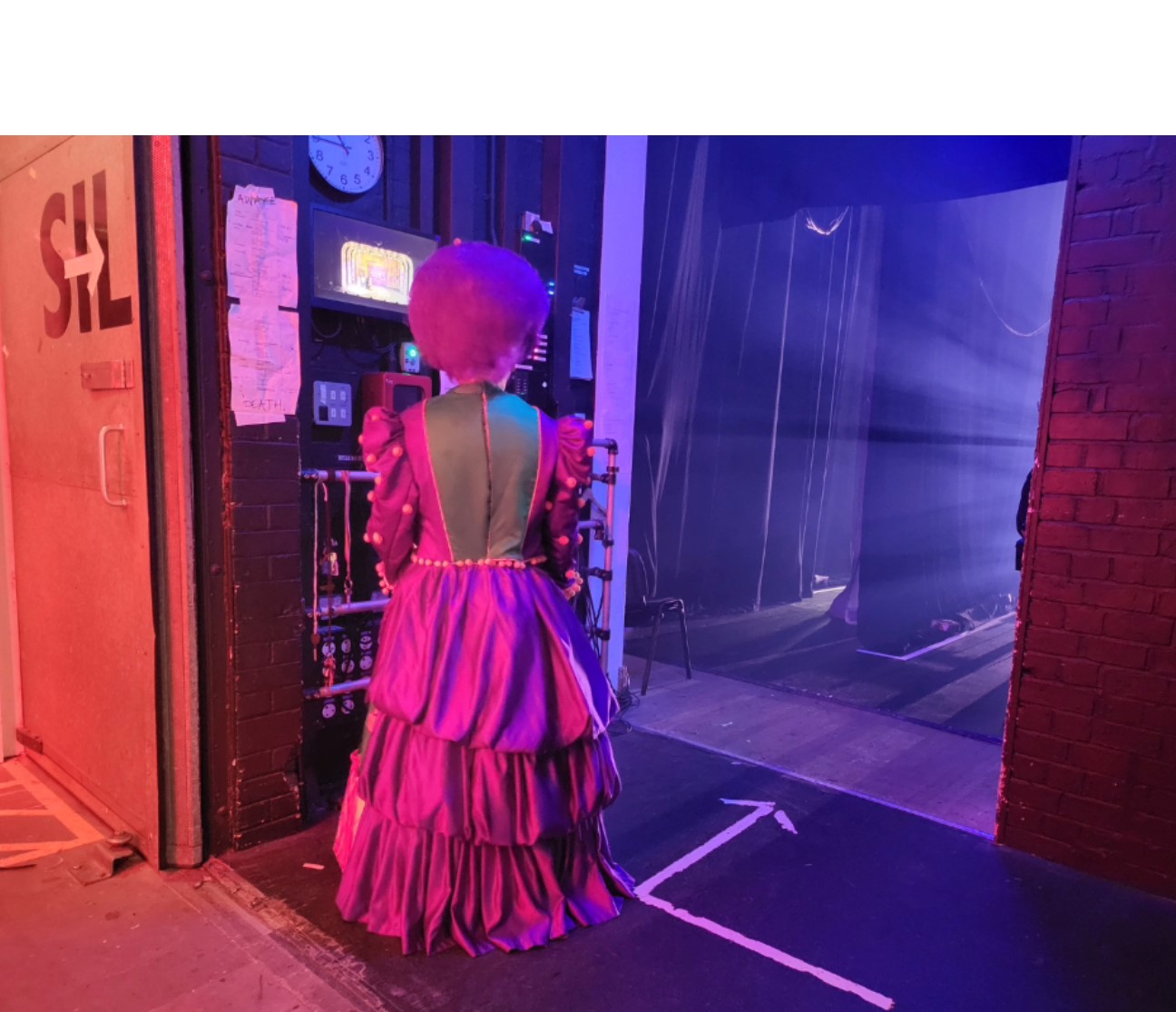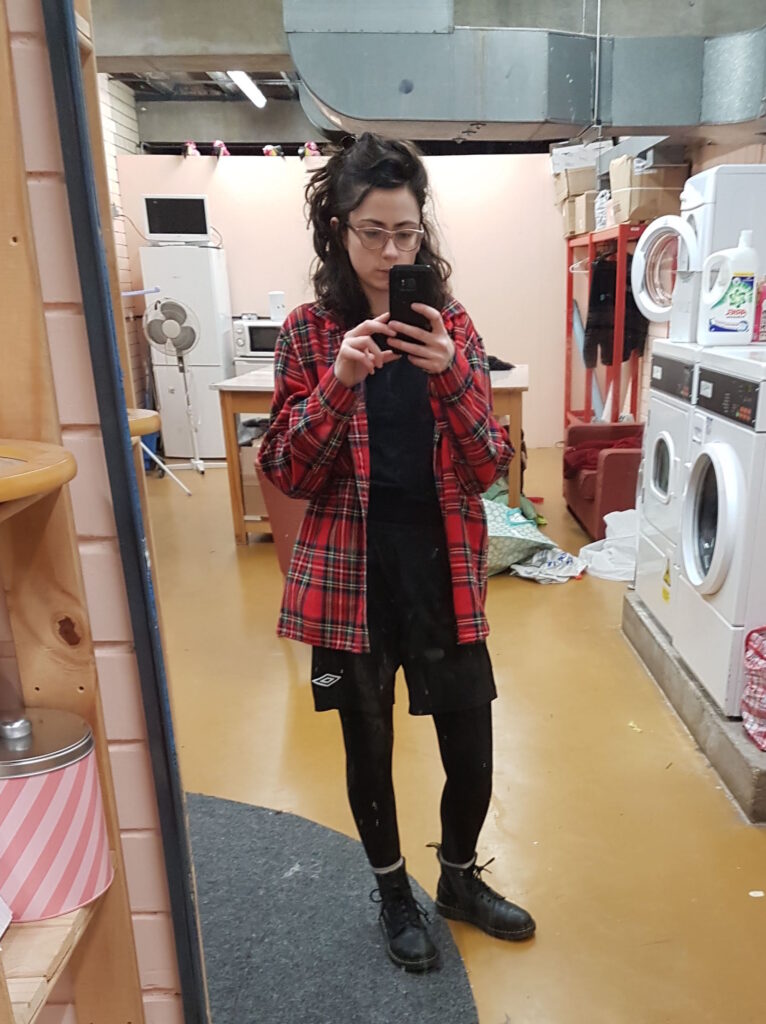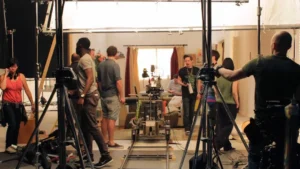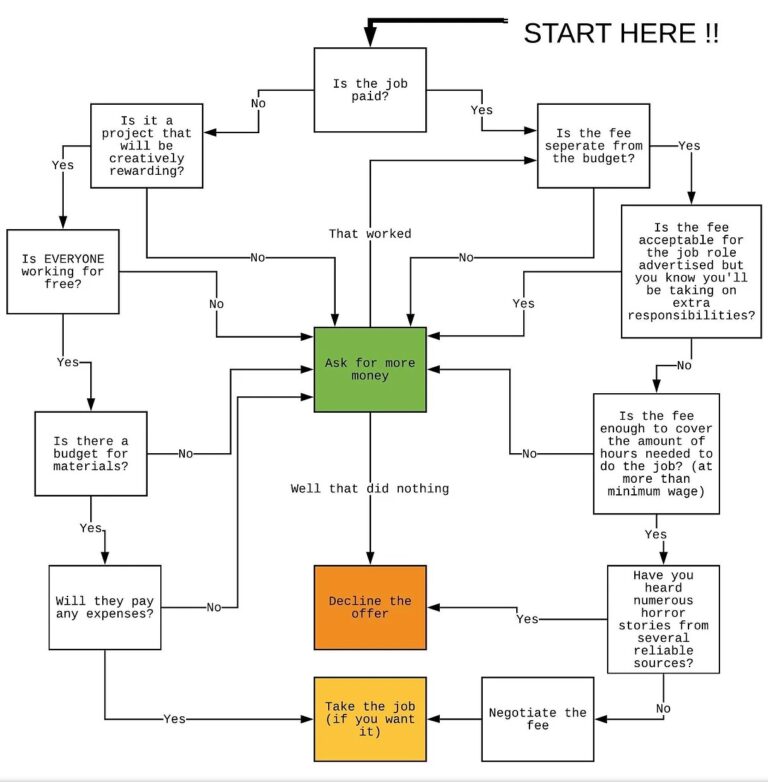It’s quite normal for people to get their first HOD position on a panto. And although pantomimes all follow roughly the same pattern they can be overwhelming, especially your first one. So here’s some hints and tips from someone that’s worked on pantomimes for nearly 10 years…. [10 years – good grief]
One week of rehearsals is pretty standard. Time is TIGHT. Be organised. Have a good look through all the trundles. The company may or may not send you a detailed list of each costume. So familiarise yourself with everything.
All the costumes will arrive on the first day. Gonna be honest – some will HUM. Get ready for everyone to moan that something smells. I’d say 90- 95% of panto costumes aren’t new, and 50% are older than you are. But because they have been made to last you should find that they are easy enough to fit – that they have been designed to be adjustable…
TIP NUMBER ONE: DO ALL FITTINGS IN THE FIRST TWO DAYS
- – Arrange fittings with DSM/Director asap. The more experienced ones will understand. Explain to the reluctant directors it’s better for everyone. You’ll have time to do alterations ready for tech. Their rehearsals wont be disrupted later on.
- – Fit male ensemble together and female ensemble together. You’ll need a few hours for each.
- – For ensemble fittings the easiest method is to just hand them out and switch until they fit best. It’s common for the excitement to override sense. The more experienced dancers will stretch and kick in every costume to make sure they can move freely. If you can’t see the dancers doing this then ask them to.
- – Tell them to use their shoes and headdresses in rehearsals. Also if you notice any long skirts/ possibly restrictive items get them to wear them in rehearsals. Ask the DSM to remind them to actually put them on.
- – Principals usually have one basic and one walkdown (for the finale). Sometimes there’s an extra poor/rich costume or other comedy sketch costumes. But you can usually fit all costumes for a principal in half an hour.
- – You’ll need about an hour to fit the dame costumes. Dames will sometimes bring their own costumes, and most will have their own padding (boobs). If the company hasn’t told you what they wear in which scene it will be between you, the dame and the director to decide. Although some experienced dames have worked this out beforehand. Flag potential quick changes during the fittings. It’s a panto tradition that every time the dame enters they are wearing a new outfit (not all companies do this now).
TIP NUMBER TWO: KEEP IN CONTACT WITH THE COMPANY WARDROBE DEPT
The company will be sending things to you most days; some bits that weren’t quite finished, an extra pair of shoes etc. After each day send them a short update. Label the subject of the email with the show and venue. They’re looking after a lot of shows so keep it brief and to the point. They don’t want to know what poppers need replacing.
- – This is missing…
- – This really doesn’t fit…
- – How is this item supposed to be worn..?
- – This actor has questions about this…
- – Do you have any fabric for this alteration… etc
Some ultra organised companies send a box of supplies and spare fabric. Otherwise you’ll have to buy what you need from petty cash. This is why it’s so important to do all fittings straight away. In case you’re in the middle of nowhere and need to order in velcro.
You shouldn’t need to make or source any major costume piece. The companies usually have large stores, so ask before you spend time looking or making. Similarly if you need fabric – ask the company – they might have the exact one from when it was made.
TIP NUMBER THREE: PICK YOUR BATTLES
Some cast members may be difficult and refuse to wear costumes. You can’t force someone to wear something. Tell your CSM and the company wardrobe department. It may go in the show report for someone higher up the chain to deal with. There’s so much to do that you physically won’t have the time or energy to keep having those ‘discussions’.
Similarly if something clearly doesn’t fit, like a pair of shoes, and it is posing a safety risk to the actor and even after you’ve explained several times they are adamant they will wear it, tell your CSM and then leave it. They may stop wearing it after a few shows and tell you it’s because the other option was actually a better colour. Either way pass the responsibility on. [Can you tell this tip is based on a specific experience..? Good times.]
TIP NUMBER FOUR: HOW TO FIT THE JUVES [KIDS]
Your CSM should know when the juves fittings are scheduled. If not get it in the diary asap. Ask for two hours minimum. Always, always have chaperones present. Some will be better than others… Get the email address/ phone number for the head chaperone from the CSM. Usually the children have to supply their own shoes/tights – the Head Chaperone will want this confirmed asap.
The kids will be very excited and it’s important to allow them to enjoy this, even if they are being irritating. Tell them they’re doing good, answer their questions, make them feel comfortable. But keep it professional – if you’re too fun they’ll look to you to be fun throughout the run. And after twenty shows feeling obligated to interact with ten happy, lively, enthusiastic children will so not be the one.
If they put wigs on – give them 2 minutes to look at themselves in the mirror. I have found they’re a lot more grown up than you’d first think. Sadly they care a lot about their appearance (far more than I did at that age) so reassure them if you can see they look unsure.
Fittings: A Step by step guide.
- The costumes will usually be labelled 1 to 10 (or however many there are). Normally the lowest number is the smallest costume.
- There are usually two teams of children. Get one team to line up smallest to biggest. Get them to sit in a line facing you. Then get the other team to sit behind their doubles. They will have been allocated a double in rehearsals and most of the time they have been matched up with costumes in mind. This isn’t always the case…
- Give out the first costume. Explain to them what scene they wear it in, and what goes on first. If they don’t listen, ask the chaperones to make them be quiet. Get one team to put it on.
- Walk down the line checking them. Write down any alterations – missing poppers etc
- Then look at them as a whole. Do they look the same? Are they all similar lengths?
- Get them all to lift their arms and kick their legs.
- Once you’re happy the costume fits tell them to sit down. If there’s a couple that don’t fit them swap around. Usually this solves the problem.
- Then write down their names with the number in their costume. Or if the costumes aren’t labelled, safety pin a piece of paper to the costume with the child’s name on it.
- Get the second team to try on the costume. Make the first team sit behind
- Repeat steps 4 -9.
- Write down the name of the child and the number they are wearing. Or add the second child’s name to the paper safety pinned to the costume.
- Explain to the children how to hang up their costume. The majority of them will be old enough to do this. Show them how it’s supposed to look when hung up.
- Give out the next costume. Let the second team go first. Repeat for all costumes. They usually have about three.
- Occasionally there’s also an extra costume for a bit part. Ask the chaperones who has been given that part.
Sometimes there are teenage juvenile dancers who are more similar in size to the adult ensemble. Sometimes they are sent doubles of the adult costumes, sometimes they are larger versions of the kids costumes and sometimes they are completely different. I found it easier to let my assistant deal with these costumes while i sort the others. Or if you have the luxury of time to just fit the older ones after.
TIP NUMBER FIVE: READ THE SCRIPT BEFORE REHEARSALS
Now here at Wardrobe Chronicles HQ we are in disagreement. I prefer to read the script when it arrives and create my character/scene breakdown ready for rehearsals. Others in our metaphorical office disagree, and say they only read the script when they are being paid to do so. Either way do read it. Yes they’re all basically the same. But read it and create your paperwork like you would any other show.
TIP NUMBER SIX: GET INTO REHEARSALS
You won’t have time to sit in rehearsals. But make sure you watch a run through. Watch two ideally – and always watch the last one. You will have a list of any potential quick changes from your character/scene breakdown. Time these changes as normal, but bear in mind that these timings can change considerably with an audience. You might find that the cast fly through a sketch in 2 minutes during the run through but with the audience participation it actually takes 10 hours. After you’ve done a few pantos you’ll get used to the sketches/speeches that on paper are a few lines but in reality take too long. Also everyone on the team is familiar with the end-of-show-big-old-costume-change-for-everyone-walkdown that is the finale. So don’t worry about that. Whoever does the song sheet will usually prattle on until both wardrobe and stage are ready. Also there will always be a quick change side of stage for whoever does the song sheet into their finale.
TIP NUMBER SEVEN: KEEP A GOOD RELATIONSHIP WITH THE CSM
Unfortunately excellent CSMs are gold dust and panto season stretches them thin. I’ve got into tempestuous situations because I’ve expected too much from someone not experienced at the job. Polite and friendly tones are key. Remind rather than demand the information/ action you require. Even if you rant about them at home, keep the relationship civil at work and at the pub. Remember it’s an intense couple of months for everyone.
TIP NUMBER EIGHT: LAUNDRY
During rehearsals ask your CSM and company wardrobe department what equipment they are sending you/ what is at the venue. For a large scale panto you’ll need two washers, two dryers, and a hotbox.
You can’t wash everything after every show. So write a schedule and tell everyone. Get the company to buy doubles of all undergarments. You won’t have time to do loads of washing between shows.
Ask the cast what they prefer. Plenty of male ensemble prefer their own dance belts so it’s wasteful to buy more. Female cast members usually have their own show underwear too. Label everything.
Do the washing from the first show in the break/ when the second show starts. Add into your show plot to put things in the dryer/ sort baskets etc
TIP NUMBER NINE: RANDOM THINGS THAT MIGHT HELP
1. Ensure there is 15 minutes in and out of costume on the tech schedules (I had to fight for this one year!)
2. Do not agree to sew props unless you really actually have the time. I’ll bet my hat you don’t. And also you’re not being paid to. You might get grief but stick to your guns. Here’s a snapshot of an actual conversation from a panto a few years ago – I dug it out from whatsapp for a snippet of real life. Delightful man. And the reason behind Tip Number 7.
“We need about 10 metres of banners hemmed if that’s okay?”
“We won’t have time to do that I’m sorry. The ASMs can use my machine if they want?”
“They’re ASMs not wardrobe?!”
“Well we can see where we’re up to in the next few days but I doubt we’ll have time”
“It’s a ten minute job but okay”
CSM Exits in huff. Cue simultaneous eye-rolls from me and my assistant .
3. I wrote my own rulebook about mic belts. Rule One: Not my job. Rule Two: Okay I’m happy to alter them. Rule Three: Fine I’ll make one. BUT THAT’S IT. YOU GET MAXIMUM ONE MIC BELT. Also ask the ASM to fit and label the mic belts. I did a couple of seasons as an ASM – they will have the time.
4. I don’t know what it is about panto season but this has happened to me a lot – A costume will need to be let out but the cast member resists because they insist they will lose weight… Gonna be honest and say I’ve always done the alteration (whether I’ve told the cast member or not is a different story…) It’s easier to take something in quickly then to let it out – and from experience I’ve never had to take it back in.
Lastly enjoy it!! Once you’ve got over the insane rush, super long hours and what is probably quite a poor hourly wage YOU’LL HAVE A BLAST.









